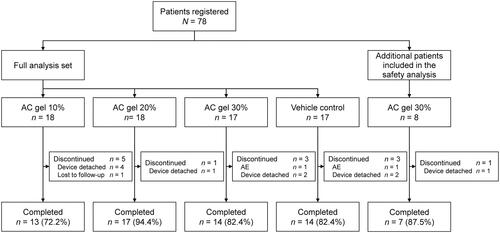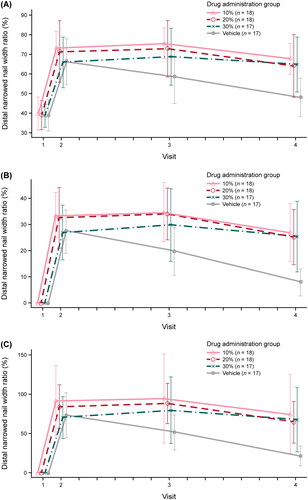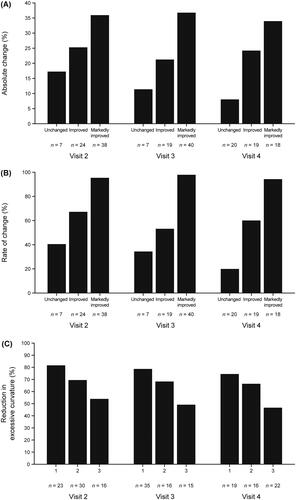Figures & data
Figure 1. Patient disposition. The full analysis set (N = 70) used for efficacy outcomes included all patients randomized to treatment in the main part of the study. The safety set (N = 78) included an additional eight patients. AC: acetylcysteine gel; AE: adverse event.

Table 1. Baseline demographic and clinical characteristics (safety set).
Figure 2. Distal narrowed nail width ratios. (A) Time course of change, (B) absolute change, and (C) rate of change (full analysis set). Data are shown as mean ± standard deviation, and missing values were not imputed.

Figure 3. Assessments of morphological changes in distal narrowed nail width. (A) Absolute improvement in narrowing, (B) rate of change of narrowing, and (C) reduction in excessive transverse curvature (full analysis set). in panel ‘C’, 1 denotes no ‘excessive transverse curvature’ was observed on distal bilateral margins of nail plate, and the patient was judged to be recovered; 2 denotes slight ‘excessive transverse curvature’ was observed on distal bilateral margins of nail plate, and the patient was not recovered (corrective treatment may or may not be given); 3 denotes ‘excessive transverse curvature’ on distal bilateral margins of the nail plate was observed, and corrective treatment was recommended.

Table 2. Summary of safety outcomes (safety set).
Supplemental Material
Download PDF (344.3 KB)Data availability statement
The research data underlying this study are subject to restrictions and cannot be shared.
